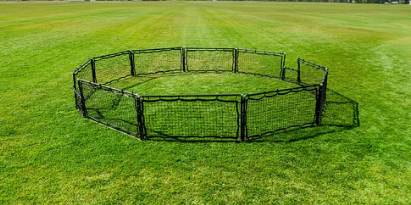Team building is highly valuable for kids as it provides numerous benefits for their personal, social, and cognitive development. Here are some in-depth reasons why team building is important for kids:
- Collaboration and Communication: Team building activities encourage children to work together towards a common goal. They learn to communicate effectively, share ideas, and listen to others. By collaborating in a team, kids develop important skills such as active listening, expressing their thoughts clearly, and understanding different perspectives. These skills are vital for success in both personal and professional life.
- Social Skills and Empathy: Team building promotes social interaction and helps children build positive relationships with their peers. It provides opportunities for kids to understand and appreciate the diversity of personalities, strengths, and abilities within a team. Through teamwork, children learn empathy, cooperation, and respect for others. They develop a sense of belonging, acceptance, and the ability to work harmoniously with different individuals.
- Leadership and Decision-making: Team building activities allow children to explore leadership roles and develop leadership skills. They learn to make decisions collectively, delegate tasks, and take responsibility for their actions. Teamwork provides a platform for kids to identify their strengths and contribute to the group's success. It nurtures qualities like initiative, problem-solving, and critical thinking, which are essential for leadership roles in various aspects of life.
- Conflict Resolution and Resilience: Team building exposes children to challenges and conflicts, providing opportunities to learn conflict resolution skills. They discover effective ways to manage disagreements, find compromises, and seek common ground. Teamwork also teaches kids resilience by experiencing setbacks, learning from failures, and adapting their approach. They develop the ability to bounce back from challenges, work through obstacles, and persist in achieving goals.
- Self-confidence and Self-esteem: Participating in team building activities helps boost children's self-confidence and self-esteem. As they contribute to a team's success, receive recognition for their efforts, and overcome obstacles collectively, kids develop a positive self-image and belief in their abilities. The supportive and inclusive environment of team building allows children to take risks, try new things, and celebrate their achievements, fostering a sense of pride and confidence.
- Learning Accountability and Responsibility: Team building teaches kids the importance of accountability and responsibility. Being part of a team helps them understand that their actions impact the overall performance of the group. They learn to fulfill their responsibilities, meet deadlines, and follow through on commitments. This cultivates a sense of ownership and accountability, which are crucial life skills for personal growth and success.
Here is a list of some of the best team building games for kids.

Silent Line Up: Silent Line Up is a team building activity often used in educational or group settings to promote discipline, focus, and cooperation. In this activity, participants are required to line up in a specific order without communicating verbally. It challenges individuals to rely on non-verbal cues, observation, and coordination to achieve the desired outcome.
Here's how Silent Line Up typically works:
- Group Formation: Participants gather in an open area and are informed about the objective of the activity. The facilitator or leader assigns a specific criterion or rule for the line-up order. For example, it could be arranging themselves based on birthdates, height, shoe size, or any other relevant characteristic.
- No Verbal Communication: The crucial element of Silent Line Up is that participants must remain silent throughout the activity. They are not allowed to speak, use gestures, or write anything down. The challenge lies in finding alternative ways to understand the criterion and align themselves accordingly.
- Non-Verbal Coordination: Participants begin the activity and work together to organize themselves into the desired line-up order. They can use non-verbal cues such as pointing, gesturing, eye contact, or physical movements to indicate their position in the line. They observe others' cues and adjust their positions accordingly.
- Reflection and Discussion: Once participants believe they have successfully arranged themselves, the facilitator assesses the line-up order against the given criterion. If the order is correct, the facilitator acknowledges the achievement and initiates a discussion about the experience. Participants can reflect on the challenges they faced, the strategies they employed, and the importance of non-verbal communication and observation.
Silent Line Up offers several benefits, including:
- Communication Skills: Participants develop alternative means of communication and understanding without relying on verbal cues. They become more attuned to non-verbal signals and learn to interpret and respond to them effectively.
- Observation and Focus: Silent Line Up enhances participants' observational skills as they closely monitor others' movements and cues. They learn to pay attention to details and focus on the objective while avoiding distractions.
- Cooperation and Teamwork: This activity promotes collaboration and teamwork. Participants must work together, adjust their positions, and coordinate their efforts to achieve the desired line-up order. It emphasizes the importance of collective decision-making and achieving a common goal.
- Problem-Solving and Critical Thinking: Silent Line Up encourages participants to think creatively and develop strategies to solve a challenge within the given constraints. They learn to analyze the situation, adapt their approaches, and find innovative ways to achieve the desired outcome.
- Discipline and Patience: Remaining silent throughout the activity requires discipline and patience. Participants learn self-control and the value of attentive listening and observing before taking action.
Silent Line Up is a simple yet effective team building exercise that fosters non-verbal communication, coordination, and cooperation. It encourages participants to step out of their comfort zones, adapt to new situations, and discover the power of non-verbal cues in achieving common objectives.

9 Square: 9 Square is an interactive and fast-paced game that combines elements of volleyball, tennis, and handball. It is played in a square-shaped structure with nine smaller squares arranged in a 3x3 grid.
Here's a more in-depth explanation of 9 Square:
- Game Setup: The 9 Square game requires a specialized framework or structure that consists of nine individual squares suspended from a sturdy frame using bungee cords or ropes. Each square is approximately 3 feet by 3 feet (0.91 meters by 0.91 meters) and has a designated number from 1 to 9.
- Objective: The objective of 9 Square is to be the last player standing in Square 1 (the highest-numbered square) by eliminating opponents from the game. Players aim to hit the ball into other squares without committing a fault or allowing the ball to hit the ground within their square.
- Gameplay: The game begins with each player standing within one of the nine squares. A soft ball, often a foam or rubber ball, is introduced into Square 9 by a designated server. Players hit the ball using any part of their body, except for catching or holding it, to send it into an opponent's square.
- Movement and Rotation: Players are allowed to move within their own square and may jump or reach outside of their square to hit the ball. However, they must return to their square before the ball is hit by another player. The ball must pass through each square sequentially, from 9 to 1, and a player is eliminated if the ball lands in their square or if they commit a fault (e.g., double hits, hitting out of sequence).
- Faults and Elimination: A fault occurs when a player commits a rule violation. Common faults include hitting the ball out of bounds, hitting the ball before it enters their square, touching the ball with two hands simultaneously, or violating other specific game rules established by the players. When a fault occurs, the player who committed the fault is eliminated from the game, and the remaining players move up to fill the vacant higher-numbered squares.
- Winning: The game continues with players trying to eliminate opponents and move up to the higher-numbered squares. The objective is to reach and remain in Square 1. The last player standing in Square 1 wins the game. Depending on the group size and available time, multiple rounds or a tournament-style format can be played to determine the overall winner.
9 Square is popular in various settings, including schools, youth groups, community events, and recreational areas, due to its fast-paced nature and inclusivity. It promotes hand-eye coordination, agility, strategic thinking, and friendly competition. The game encourages active participation, teamwork, and communication skills as players react quickly to the ball and coordinate their movements to outlast opponents and secure a place in the higher-numbered squares.

Hula Hoop Pass: Hula Hoop Pass is a fun and interactive team building activity that requires coordination, communication, and cooperation among participants. It involves passing a hula hoop through a sequence of linked hands while maintaining its original shape. The goal is to successfully pass the hoop from one end of the line to the other without breaking the chain or dropping the hoop.
Here's a more detailed explanation of the Hula Hoop Pass activity:
- Group Formation: Participants form a line by standing shoulder-to-shoulder and facing the same direction. They should stand close enough to touch the person next to them with their outstretched hands.
- Introduction of the Hula Hoop: A hula hoop is introduced into the activity. The hoop is typically held by the first person in line, and the objective is to pass it through the linked hands of each participant without letting go or breaking the chain.
- Starting the Pass: The first person in line lifts the hula hoop above their head, ensuring it is parallel to the ground. They then step forward, allowing the hoop to pass through their arms and link the hoop with the outstretched arms of the person behind them. The hoop is now held by the second person in line.
- Passing the Hoop: The second person follows the same process as the first, stepping forward and passing the hoop through their arms to link it with the third person. This continues down the line until the hoop reaches the last person.
- Returning the Hoop: Once the hoop reaches the last person, the process is reversed. The last person lifts the hoop above their head and passes it back through their arms to the person in front of them. Each participant continues passing the hoop until it reaches the first person again, completing the loop.
- Challenges and Variations: As the group becomes more comfortable with the basic hula hoop pass, additional challenges can be introduced. For example, participants can be blindfolded to enhance the need for communication and reliance on touch. Alternatively, participants can be required to pass the hoop through their legs or perform specific movements while passing the hoop.
- Reflection and Discussion: After successfully completing the hula hoop pass, a debriefing session is conducted to discuss the experience. Participants can share their observations, challenges faced, and strategies employed. The discussion can focus on the importance of communication, teamwork, and adaptability in achieving a shared goal.
Hula Hoop Pass is an engaging activity that promotes teamwork, communication, and problem-solving. It encourages participants to work together, trust one another, and coordinate their movements effectively. The activity also highlights the significance of clear communication, active listening, and adapting strategies as needed to ensure the smooth passage of the hoop.
Blind Mice: The game "Blind Mice" is a fun and engaging activity that challenges players' listening, communication, and trust skills. It involves a blindfolded player navigating through a designated playing area with the guidance of their teammates, who provide verbal instructions to help them avoid obstacles and reach a specific goal.
Here's a more detailed explanation of the Blind Mice game:
- Group Formation: The players are divided into pairs or small teams consisting of one blindfolded "mouse" and one or more sighted "guides." The guides' role is to provide directions and keep the blindfolded player safe throughout the game.
- Game Setup: The playing area is set up with various obstacles, such as cones, chairs, or other objects, to create a challenging environment for the blindfolded player to navigate through. The goal is typically to reach a specific destination or complete a task within the area.
- Blindfolding the Mouse: The blindfolded player, or "mouse," is securely blindfolded to ensure they cannot see anything. This enhances their reliance on the verbal instructions given by their guides and heightens the challenge of the game.
- Communication and Guidance: The guides stand outside the playing area, and the blindfolded player starts at a designated starting point. The guides then provide verbal instructions to direct the mouse through the obstacles and towards the goal. The instructions must be clear, concise, and accurate.
- Navigating the Obstacles: Based on the instructions given by the guides, the blindfolded player cautiously moves through the playing area, relying solely on their listening skills to interpret the directions. The guides may use directional cues, such as "step forward," "turn left," "move slowly," or "watch out for the chair," to guide the mouse safely through the obstacles.
- Goal Achievement: The blindfolded player continues to follow the instructions provided by the guides until they reach the designated goal or complete the assigned task. The goal could be reaching a specific location, retrieving an object, or solving a puzzle within the playing area.
- Reflection and Discussion: After the blindfolded player successfully completes the task or reaches the goal, the game concludes with a debriefing session. Participants can discuss their experiences, challenges faced, and strategies used. The focus is on effective communication, trust-building, and the importance of clear instructions and active listening.
Blind Mice is not only a fun game but also an effective team-building activity. It encourages participants to develop trust, effective communication, and active listening skills. The blindfolded player learns to rely on the guidance and instructions provided by their teammates, while the guides learn to communicate in a clear and concise manner. The game highlights the significance of trust, teamwork, and effective communication in achieving shared goals.
In conclusion, team building games for kids provide a plethora of benefits that go beyond mere entertainment. These games foster collaboration, communication, social skills, empathy, leadership abilities, conflict resolution, resilience, self-confidence, and accountability. As children participate in these activities, they develop valuable life skills that will serve them well in various aspects of their personal and professional lives.
By engaging in team building games, kids learn the value of working together towards a common goal. They experience the power of effective communication, active listening, and understanding different perspectives. These activities create a safe and inclusive space where children can explore their strengths, embrace challenges, and celebrate achievements. Teamwork becomes more than just a concept; it becomes an experiential learning opportunity that shapes their character and prepares them for the future.
Moreover, team building games instill important values such as cooperation, respect, and empathy. Kids learn to appreciate the strengths and abilities of their peers, fostering a sense of belonging and acceptance within the group. They develop crucial social skills that enable them to build positive relationships, resolve conflicts, and work harmoniously with diverse individuals. These skills are essential not only in team settings but also in everyday interactions and future endeavors.
Another great game for kids is Gaga Ball.
As we wrap up, it's important to remember that team building games for kids should be age-appropriate, engaging, and enjoyable. They should create a supportive environment where children feel encouraged to participate, take risks, and contribute their unique perspectives. Whether it's a game of soccer to improve coordination or a challenging puzzle that requires collaboration, the key is to provide opportunities for kids to grow, learn, and have fun together.







